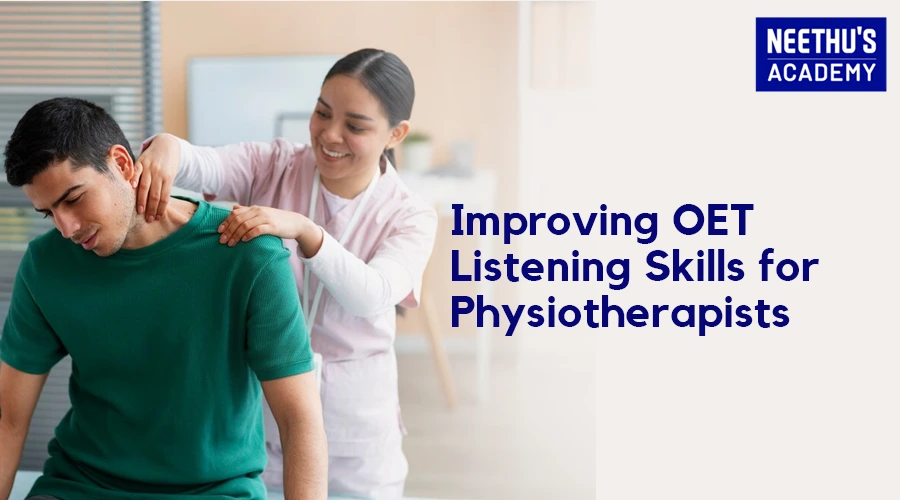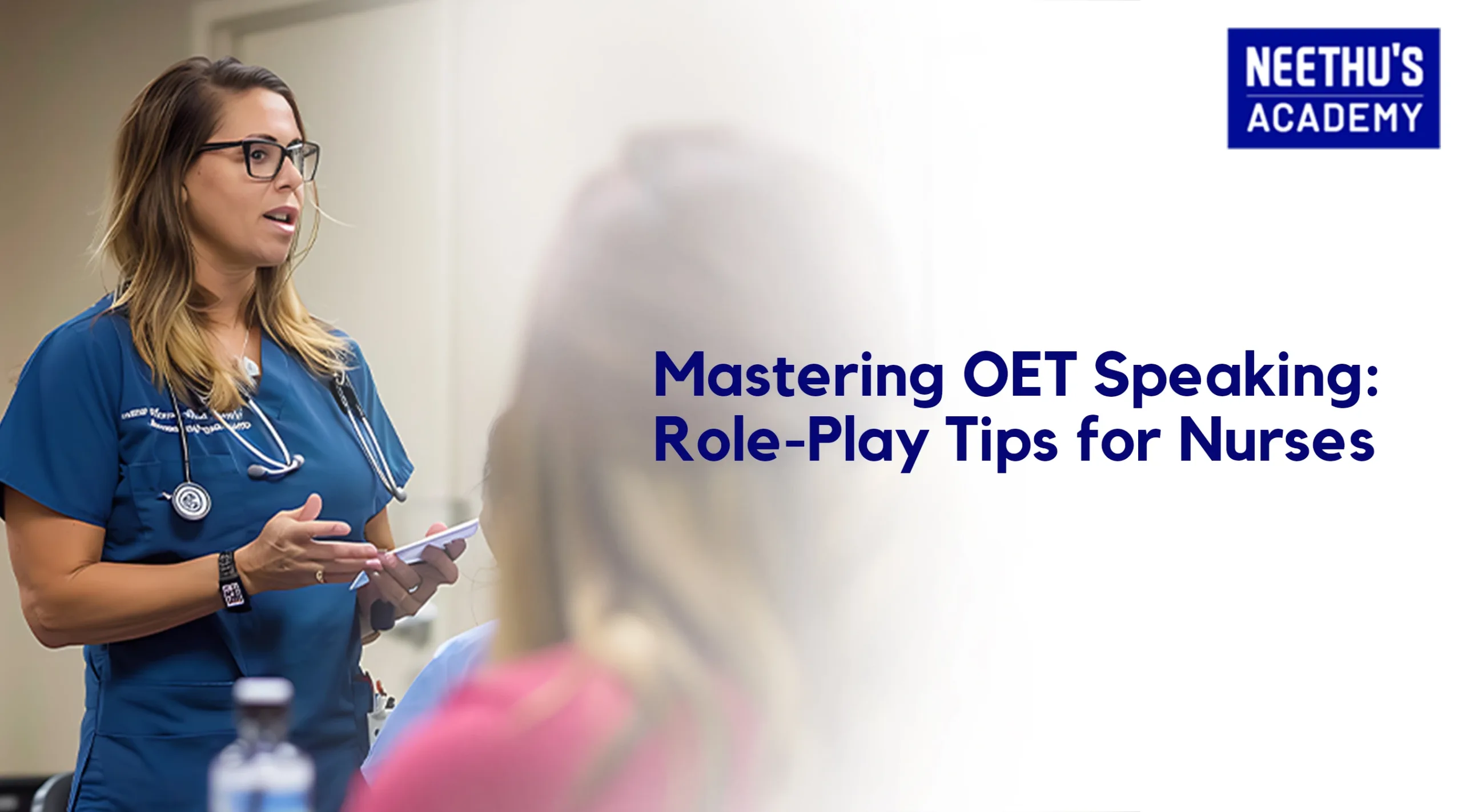OET Listening Practice: Key Strategies for Physiotherapists
Listening is one of the core competencies tested during the Occupational English Test (OET) that healthcare professionals, such as physiotherapists, have to undergo. It is a foundational key toward effective communication in clinical settings as it is central to providing high-quality service. So, here is an in-depth guide specially designed for a physiotherapist who wants to improve the listening skills for OET.
For physiotherapists who wish to work in English-speaking countries, the OET is a qualification that tests their level of English proficiency within a healthcare scenario. Among its sub-tests, the most important and challenging is the listening component. This can only be mastered by understanding the test format properly, developing good preparation strategies, and engaging in regular practice.
Be it your first attempt or trying to improve your scores, this blog will act as a roadmap to success with actionable tips, insights, and recommended resources.
Overview of the OET Listening Sub-Test for Physiotherapists
Some key areas for physiotherapists include:
Accurate diagnosis and treatment
Physiotherapists can design a treatment that is tailored according to a patient’s history, symptoms, or worries.
Effective teamwork
Physiotherapists often have to communicate with other doctors and practitioners. Not hearing instructions well might easily mislead someone and guide the patient towards some wrong treatment or delay recovery.
To ensure safety
A clear understanding of the directions or instructions helps to reduce risk, especially when there is a complicated treatment procedure or equipment.
Key Challenges in OET Listening for Physiotherapists
Comprehension of Medical and Physiotherapy Terms
The audio recordings are filled with technical terms. Examples include “mobilization,” “postural assessment,” and “neuromuscular therapy.” Unless you know these words, it is easy to get lost.
Tip: Make a list of commonly used physiotherapy terms and check over it regularly.
Deal with accents and dialects
The speakers in the recordings may use different accents such as British, Australian, or American accents. It might be intimidating for some if they’re not used to the pronunciation.
Practice tip: Use audio materials that feature various podcasts or interviews from other English-speaking countries.
Identifying Important Information Under Time Pressure
You have limited time to process the audio and answer questions. Missing one detail can disrupt your flow.
Tip: Train yourself to recognize the keywords and filter out the irrelevant details.
Effective Strategies for OET Listening Physiotherapists
Practice with Realistic Scenarios
One of the best means of preparing for the OET Listening sub-test is in simulating a real-life situation. Typically, physiotherapists encountered very precise listening scenarios that would be on talking about the symptoms of patients, treatment plans, or progress. This way, you get familiarized with the format and even the content of the exam.
For instance, listen to dialogues regarding rehabilitation plans and the time required to recover or how one can tone up. Attend more to details such as recommended exercises, frequency, and goals of therapy. This enables better listening skills and enables easier understanding and contextualization in memory for use during the test.
Build Contextual Understanding
Always preview the questions when you have a minute or two before the recording begins. This simple yet potent step allows you to anticipate what kind of conversation will be had and to look for what you will be listening for in the details. For instance, when you’re listening to a question that asks for information about “treatment duration,” you would likely hear words like “two weeks,” “daily sessions,” or “until improvement is seen”
This can help an individual focus more attentively, avoid missing some crucial information, and anticipate critical moments within the recording.
Develop Note-Taking Techniques
Taking effective listening notes is crucial. Since you hear it only once, you should write down the salient points briefly and as concise as possible. Abbreviations come in handy in saving precious time. For instance, instead of “range of motion,” jot “ROM” or spell out “treatment” into “Tx.”
Summarize discussions in a structured way, noting items such as problem identification, solutions proposed, and key outcomes discussed. Personal shorthand is developed for quick note-taking during practice.
Enhance Medical Vocabulary
To improve, make a list of medical terms daily and go through one by one. Software, such as Quizlet and Anki, strengthens vocabulary by using flashcards and spaced repetition. Reinforce the terms through mock tests to develop understanding in context.
All these strategies will improve your listening sub-test ability to decode audio content with maximized proficiency in OET.
How to Practice OET for Physiotherapists
Availability of Specialized Audio Resources from OET
You can use several sources, such as the official OET website, YouTube channels, and podcasts for healthcare. Find any materials that are physiotherapy-specific in their discussion.
Mock Tests
Simulated tests will help you get familiar with the test format, time management, and enhance your confidence level. Moreover, analyze each mock test to point out mistake-making areas.
Practice Listening to Different Contexts
More extension of practice using OET material. Listen to medical lectures, patient interviews, or physiotherapy webinars. The reason is that one tends to adapt their hearing to different types of accents and speaking.
Common mistakes in OET Listening and how to avoid them
Overemphasizing unfamiliar words
Focusing too much on unknown terms distracts you from the meaning and context. Use your logic and depend on clues from the context.
Omitting the Non-Verbal Cues
Other elements, such as intonation, silence, and stress, give essential clues. For instance, if a treatment is being emphasized, then it must be important in some way.
Lack of Timed Practice
Without timed practice, you will feel pressured when sitting for the test. Timed exercises closely resemble an actual test setting and enhance time management.
Role of Coaching in the Success of OET Listening
Systematic Coaching: Guidance on Each and every section of the Listening sub-test.
Faculty Members: get trained by Experienced OET trainers.
Peer Support: Interaction between fellow aspirants creates a motivational environment and support mutual learning.
The Best OET Coaching Center in Kerala
Neethu’s Academy is one of the most elite institutions from which physiotherapists are trained before appearing for the OET. There are specialized courses, focused listening practices, and experts with an exceptional success history.
Conclusion
Development of the OET listening skills requires effort, practice, and the right resources. Keen focus on real-life scenarios, mastering medical vocabulary, and professional guidance will help a physiotherapist ace the Listening sub-test and move closer to their dream careers.
Start your preparation now with strategic planning and expert guidance from Neethu’s Academy. Success is within easy reach through proper applied efforts and smart preparation.
Frequently Asked Questions





